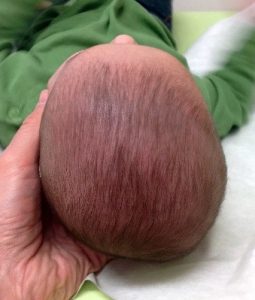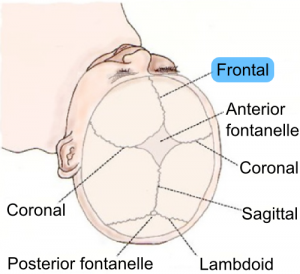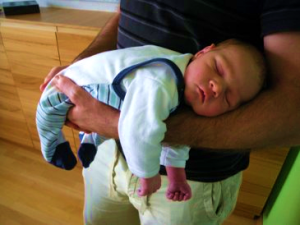
There are few joys in life comparable to bringing home a new baby. However, this time of excitement is often accompanied by a sense of uncertainty, especially if this is your first time on the baby rollercoaster and you’re still unsure of what to expect.
Of course, there will be plenty of people along the way willing to offer some helpful (or not so helpful) advice of what toys are good for learning, general foods to avoid and how much time your baby should spend playing on their back verses their stomach. However lovely the intent, this advice can snowball into a well of confusion that is often hard to navigate. What should my baby be doing? When are they supposed to crawl? Or sit? How should they play? Does it matter?
One key word to keep in mind with your new bub is this: Balance.

Plagiocephaly is a very common condition seen in newborn babies and refers to a flattening of part of the back of a baby’s head.
Positional plagiocephaly is more common in younger babies, with rates increasing from 6 weeks of age to a peak at 4 months. This is not an immediate cause of alarm as there is no research to suggest that this change in head shape has any impacts upon brain development.
However, if left unmanaged, can gradually cause changes in the baby’s head shape, ear positioning and fascial alignment.

When babies are first born, the bones of their skull are not yet fused together and are separated by sutures and fontanelles. These flexible junctions between bones allow the sutures and fontanelles to be narrowed and the bones to overlap in the birth canal to ease the birth process.
After a baby is born, a soft spot on the top of the baby’s head can be gently felt, known as the anterior fontanelle. This is the gap between the bones of the baby’s skull where they are yet to fuse together. This gap will slowly close as the infant ages, and can be felt for up to 12-18 months of age.
Until the bones of the skull are fused, they are susceptible pressure which can cause them to shift when sustained pressure on one part of the skull occurs. This is seen as a flattening or loss of roundness in this part of the baby’s skull.
There are several factors that can lead to the flattening of the skull:
Plagiocephaly can be successfully managed conservatively using some clever strategies to change a babies environment and equalise the pressures on the skull.
If you are noticing any flattening of your baby’s head, remember that until their skull fuses together their head shape can continue to change. With the right strategies this should slowly return to normal. In this case, physiotherapy can help!
It is important to remember that babies need to change the position that their head is in throughout the day.



In summary, it is important that your new baby spends equal time on their tummy and their back throughout the day, ensuring equal time spent looking to each side to prevent constant pressure on one part of their skull. This can be achieved through play and cuddles throughout the day as you ensure everything interesting and fun is on their unfavoured side.
If you have any concerns that your baby is developing flattening on one side of their head, developing a side preference, or you simply have some questions regarding your new baby, pop in to play with one of our physiotherapists for a chat and an assessment to help alleviate your concerns.

Taylor is a Physio member of our team. She works from our Penrith practice.